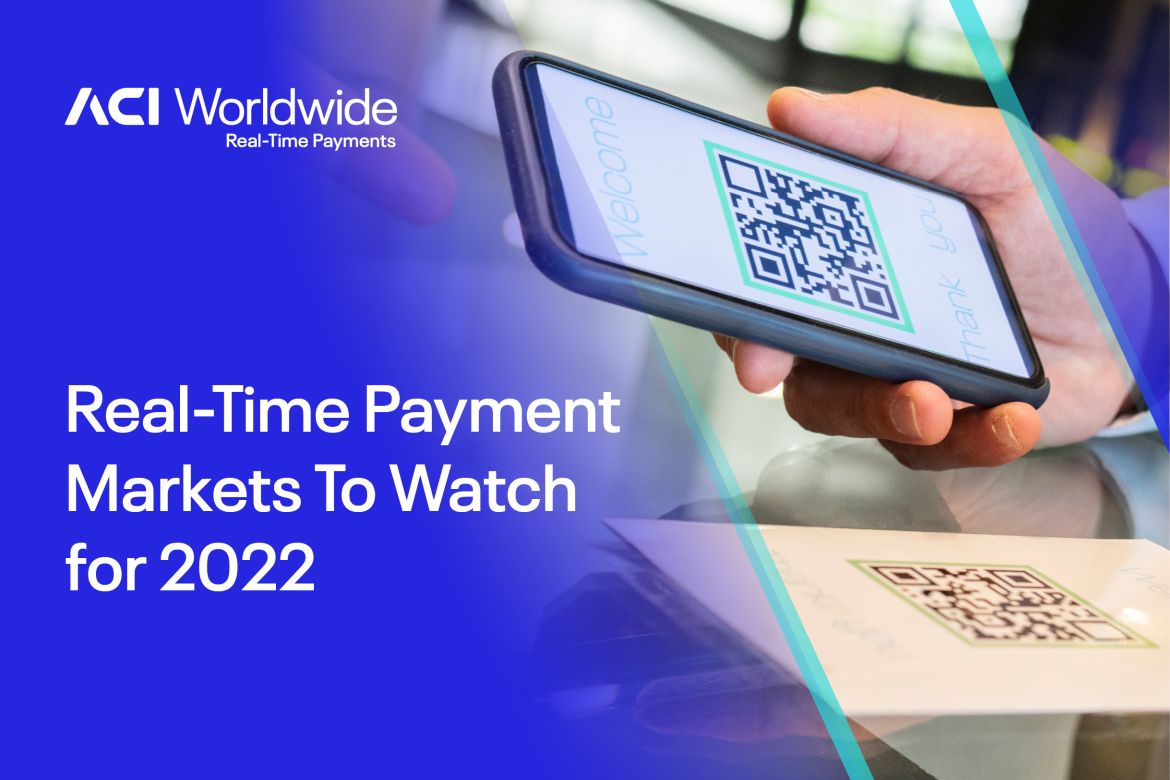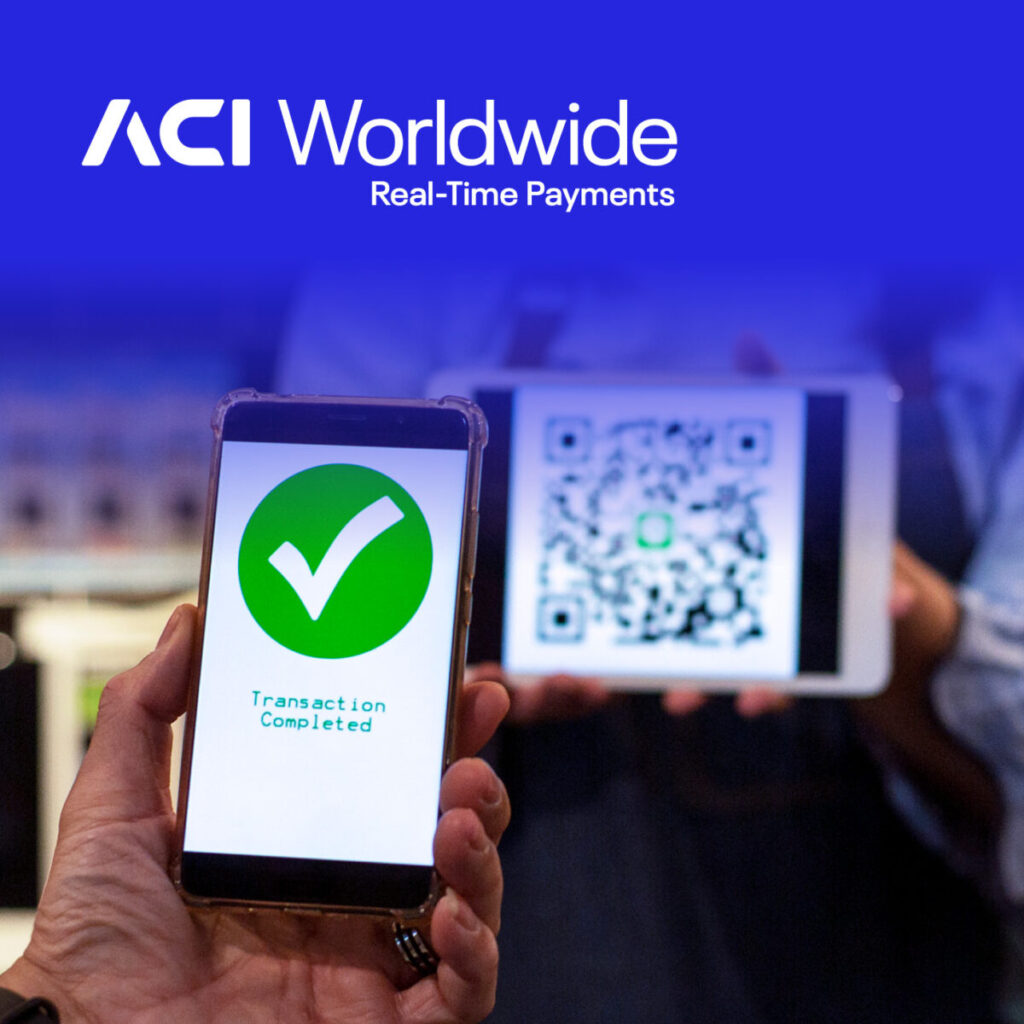ACI Worldwide, a global leader in mission-critical, real-time payments software, recently released its latest Prime Time for Real-Time Report. It features 53 global markets with insights and expertise on the trends, technologies and initiatives driving real-time success.
Somya Patnaik is an experienced product manager with expertise in real-time and digital payments. As part of the market-facing solution management team at ACI, she leads the solution strategy and go-to-market for various real-time and digital payment initiatives.
Here, Mumbai-based Somya Patnaik brings us her real-time payment markets to watch in 2022.
Asia: Indonesia and Pakistan
Indonesia is due to launch the BI-Fast real-time payments scheme in 2022, as part of the government’s Indonesia Payment System Blueprint 2025 vision to improve digital payments availability and adoption.
It is a late entrant to real-time payments in the region, but neighboring and highly mature markets such as Malaysia, Thailand and Singapore offer a glimpse of the developments to come around digital overlays and value-added services.
Meanwhile, Pakistan’s efforts to lift financial inclusion and curb illicit financial transactions will be boosted in 2022 with the phased launch of the Raast real-time payments system.
Backed by the State Bank of Pakistan, the first use cases include government payments, salaries and pensions, alongside payments from national social and welfare programs. (Turn to page 64 of the report for Pakistan profile)
Middle East and Africa: Kingdom of Saudi Arabia, UAE and South Africa
The Kingdom of Saudi Arabia has taken advantage of its region-leading levels of mobile and internet connectivity to make strides in real-time payments. Since the launch of its first scheme in 2020, our 2021 data shows adoption stands at an estimated 174.59 million transactions. This is 5.9 per cent of overall electronic payments by volume.
This achievement is testament to the clarity and execution of the government’s Vision 2030 strategy to modernise and digitise its payments infrastructure. With strict and highly visible targets such as making 70 per cent of payments digital by 2030 and new use cases coming online we will see accelerated adoption from here on out.(See Kingdom of Saudi Arabia profile, page 65)
Meanwhile, the Central Bank UAE plans to launch its IPP real-time payments scheme in October 2022 and market conditions couldn’t be better. The market’s extremely cosmopolitan demographic has already embraced digital payments, with mobile-based payments common and usually preferred. It also enjoys one of the region’s strongest rates of merchant adoption, with point-of-sale terminals and QR codes displayed at most outlets. (See UAE profile on page 68)
Elsewhere, South Africa’s Rapid Payment Program (RPP) is bringing the next generation of capabilities and use cases to the country’s long established real-time payments system. With mobile use having exploded since the original scheme launched, the programme aims to simplify the platform by adding mobile-based functionality and payment alias capabilities to the existing rails. With a population already familiar with real-time payments, we can expect these new use cases to inject renewed vigor, growth and innovation into the market. (See South Africa profile, page 66)
Pacific: New Zealand
Covid-driven adoption of digital payments in New Zealand exposed gaps in its payment experiences that the central bank is now keen to close with a real-time scheme. Public details are scarce at this time, but technology won’t be a problem with API-based open banking already a strong feature of New Zealand’s payments ecosystem.
Given this, and the relatively small scale of the market, a point-to-point system based on APIs may emerge as the architecture of choice. This would be a more cost-effective approach than the centrally built, owned and managed schemes commonly seen elsewhere. (See New Zealand profile, page 73)
North America: US
FedNow in the US is the biggest real-time payments story to arise from North America in recent years, with 2021 seeing the launch of a pilot phase involving more than 200 financial institutions and processors. The real-time, account-to-account (A2A) payments service is slated for full launch in 2023.
By leapfrogging the development journeys seen in other markets around the world, the network is expected to significantly advance real-time payment schemes in the U.S. It will deliver ubiquitous A2A transfers, QR code payments and biller Request for Payment (RfP). (See US profile page 16)
Latin America
Brazil’s PIX system has passed a billion transactions within months of launching and continues to grow. There are now more than 100 million PIX users. Latin America is a fairly well-developed real-time payments market, but PIX stands in sharp contrast to the experience of some countries, such as Mexico, where the domestic scheme’s reliance on legacy technology has limited innovation at the front end and around frictionless payments.
However, PIX solved for that from day one with an all-purpose, real-time payments tool for almost every scenario in everyday life. (See Brazil profile, page 78)
The next wave of real-time payments success is set to come from Peru, where the modernisation of its Deferred Transfers and Immediate Interbank Transfers system (ITT, launched 2016) has been designed to better meet the needs of the 70 per cent of unbanked citizens. Peru has already seen incredible real-time payments transaction growth, with plenty more predicted. (See Peru profile, page 82)
Download the Prime Time for Real-Time Global Payments Report
Image and article originally from thefintechtimes.com. Read the original article here.


